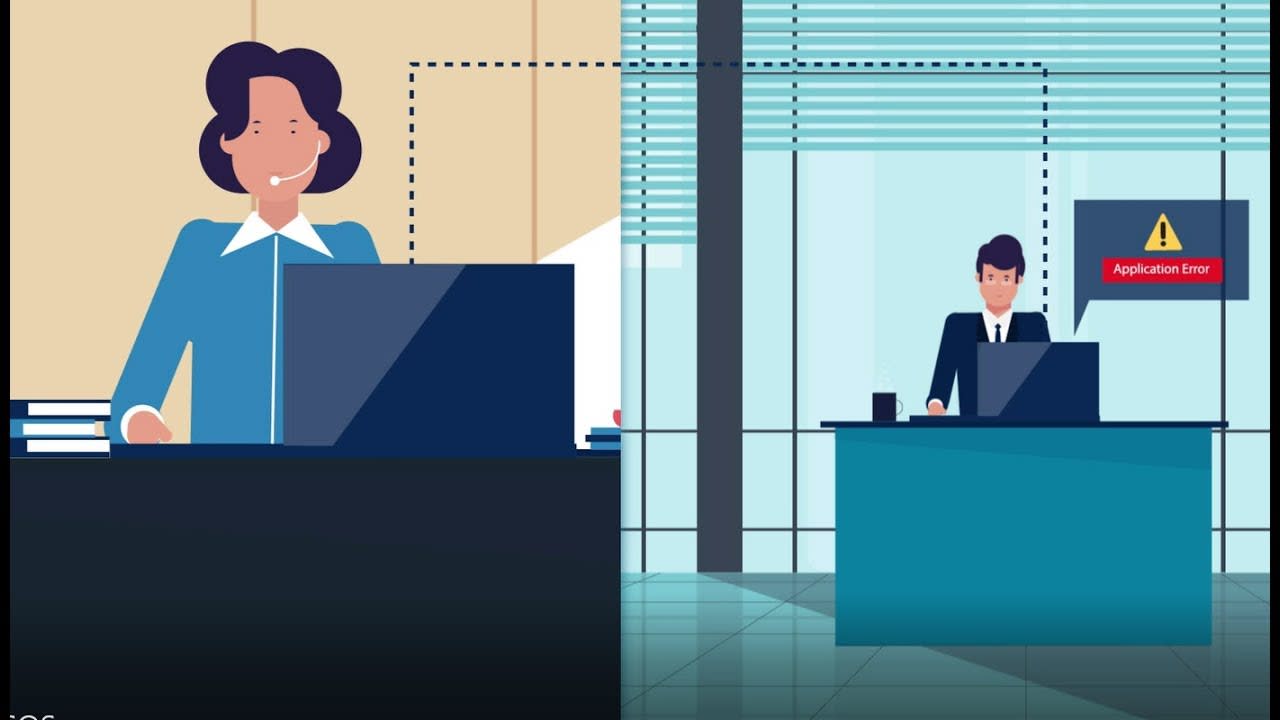IT support is more important than ever. Although, with growing companies, IT specialist shortages, complex tools, and high expectations from workers, the job can be a perfect storm of stress and frustration.
On top of all that, your IT help desk might not even know users are experiencing problems. According to a NetMotion survey of remote workers and IT professionals in 2020, 57.5% of remote workers who encountered IT issues didn’t even report the issue, leaving IT departments in the dark about what’s going wrong and why. Small issues that go unreported and unfixed hold the potential to create chaos. Who is expected to manage it? Your IT help desk.
Remote access makes life easier for your IT help desk.
Whether your team’s managing the IT needs of remote workers or those right down the hall, having remote access to your end-user’s computers saves time and energy. Rather than trying to have the end user explain the problem, your team can instantly see their desktop—and the problem—for themselves. This allows your IT support team to diagnose and resolve the problem right from their desktop.
Not all remote access solutions are equal, though. To build the optimum system you need to focus on a few key things: The needs of your end users, the feedback loop between your end users and IT support, and relieving the burdens placed on your IT help desk.
Want a happier IT help desk? The following three solutions help get your IT support and end-users on the same page.
1. Ticket system integration
If your end users are trying to solve problems on their own—or ignoring them altogether—it creates a headache for IT support. Ticket systems help create a naturally responsive system which increases user confidence and willingness to report a problem. When end users get an immediate notification that their ticket has been processed and a solution is coming, they know their problem hasn’t dropped off your radar. This keeps them from trying to solve problems without your input. It can also keep users from calling you for updates, giving your IT help desk more time to actually solve problems.
According to Dimensional Research, 72% of customers don’t want to explain their problem to multiple people (ZenDesk agrees). Those surveyed expressed frustration when they had to keep explaining their problem to multiple people. Support ticket integration means every member of your help desk has the same information for every reported issue.
By integrating remote access with a ticketing system, technicians can launch a remote session and begin troubleshooting right from within the incident or ticket. This reduces overall response and resolution times. After the session is complete, all the details are automatically logged in the ticket. On top of meeting audit and compliance needs, this reduces follow-up calls and emails. Altogether, ticket system integration results in happier technicians and end users.
2. Secure and efficient technician management
A service desk should be able to organize technicians by expertise or corporate departments, and then have the incoming support requests routed automatically to the appropriate technicians. Easy configuration of routing, organization and technician collaboration on support requests results in improved technician efficiency and better end-user experiences.
Once you’ve organized your help desk, secure multi-user support can help define roles and control permissions. With secure multi-user support, your help desk can streamline and restrict technician access and accounts without traveling to each site. Your IT technicians can configure granular permissions for team members from wherever they are, simplifying the process.
ABC is a SaaS provider that works with clients in the retail space. Their IT team uses Splashtop to help improve the day-to-day operations of their customer’s stores. ABCis’s previous remote access software provider fell short when it came to security measures. Their Integrated Systems Manager, Braeden Saxon told Splashtop,
“They [a competitor] didn’t provide the ability to manage users, which is a concern for us as we have to have shared passwords for unattended access. It’s not at all ideal. We have no way to lock down access should one of our team members leave the company. We started looking for an alternative solution that had multi-user support and provided much better security.”
With Splashtop SOS, ABCis technicians can provide attended and unattended support via individual accounts. Robust security measures, including comprehensive logging of remote sessions, ensure they can do so securely.
3. Comprehensive support across devices (including BYOD)
Remote support doesn’t need to end with company-acquired desktop computers. In today’s always-connected business environment, it shouldn’t.
Remote access solutions that offer a Bring-Your-Own-Device (BYOD) option are increasingly important. Remote workers often opt to use their own personal laptop or mobile device rather than one assigned to them by their employer. When the choice of device is driven by personal preference rather than employer systems, IT help desks need solutions that make their job easier. They need to be able to troubleshoot across operating systems, hardware and software diversity, and manage differences between mobile and traditional systems.
Attended support means IT support workers can do that by instantly accessing or remotely viewing Windows, Mac, Android, and iOS devices.Remote access to mobile devices means your IT help desk can solve problems even when work is being done on the move. Your end users are never more than a help request away from expert IT support, no matter what device they’re working from.
With BYOD-integrated support, IT help desks have the tools they need to increase productivity and satisfaction for themselves and their users.
Whether your end users are working with Windows, Mac, or mobile systems, Splashtop SOS works for you and for them.

Sign up for a 7-day free trial of SOS today
Talk to our team about Splashtop Enterprise

